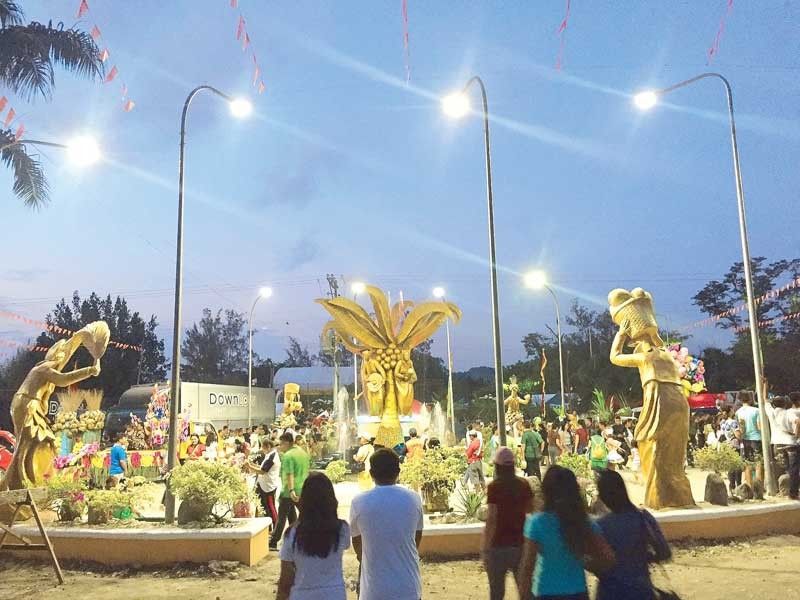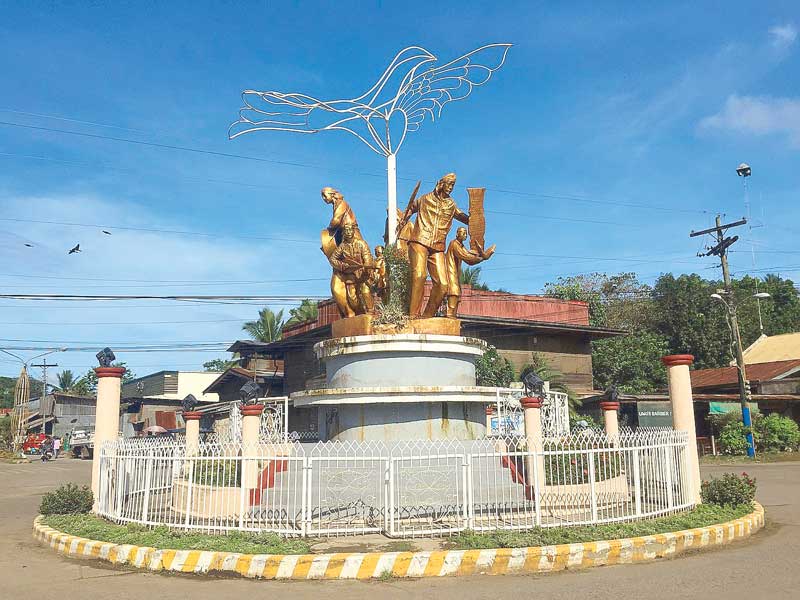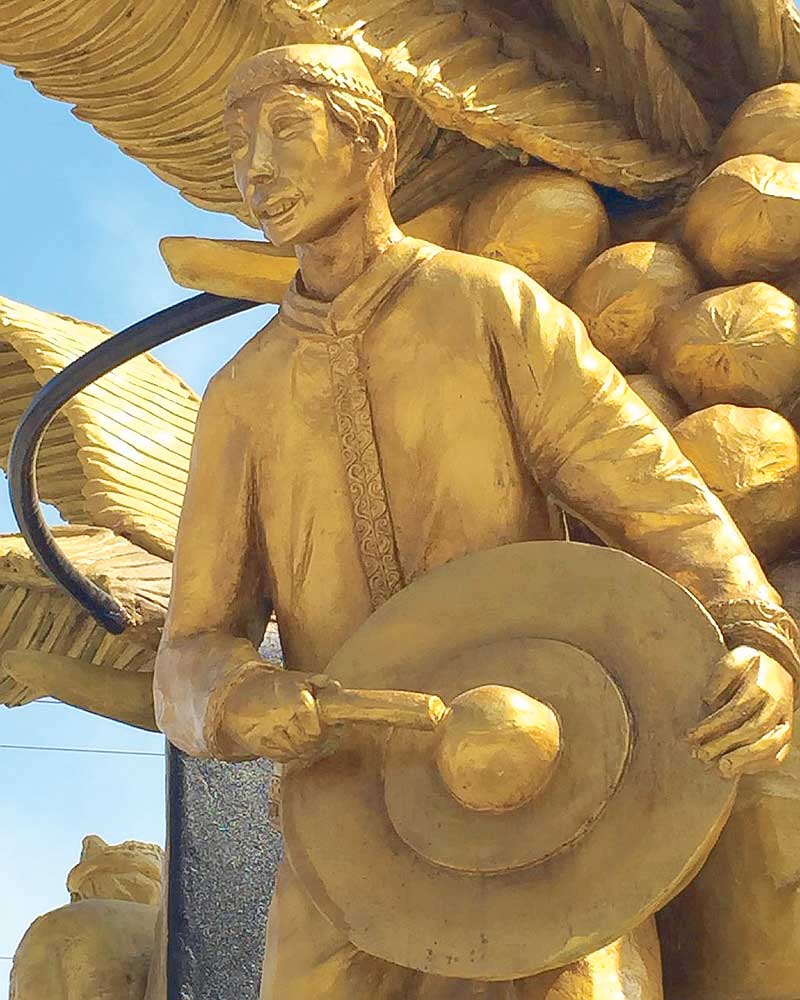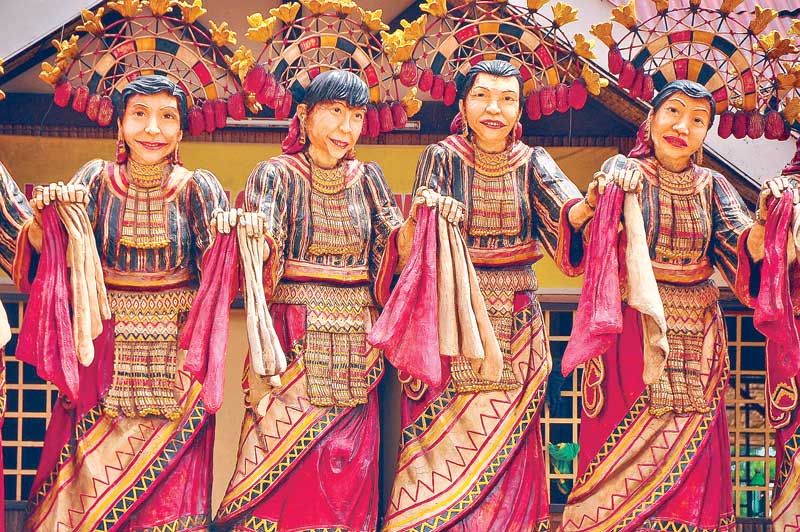Monuments To Peace

MANILA, Philippines — Born in Cotobato City, Ray Mudjahid Ponce Millan, better known as Kublai, grew up knowing the realities of war and chaos. “Hindi biro. Hindi pwedeng walang gawin (It’s no joke. You can’t not do something about it),” he says.
“Art is the only thing I know,” he adds, affirming his fervent passion for his craft.
Kublai studied Fine Arts at the University of the Philippines and is well-versed in different art forms including sculpture, photography, painting, digital art and performance art. It has always been important for him to give voice to the people of Mindanao through his art.
When he was just starting his art practice some 20 years ago, Kublai recalls there were very few galleries in Mindanao and it was a struggle to promote culture.
With this in mind, he developed the work that he is now best known for – monuments.
Instead of allowing art and culture to be sidelined and inaccessible, Kublai decided to confront people with his art in the streets – literally. Today, his monuments can be traced all over Mindanao, from the iconic durian in front of Davao International Airport to several Tri-People monuments along the road and at major rotundas in different cities in Mindanao.

A dove tops the tri-people monument in Upi, Maguindanao.
“It was a social experiment,” he says of his venture into creating monuments. Though he does not have statistics, he has noticed that communities that house his work are often happier. Art has changed the way people live, he says.
Not all local governments prioritize art and culture, Kublai says, but there are some leaders that he deems exemplary that see the value of art in uplifting their residents’ quality of life.
Kublai likens his ideal cities to those in Europe, where there are monuments in every corner. But, his monuments are smiling and happy, he says. And, they are not made of marble or bronze, but of cement and other affordable materials.
Kublai’s popular tri-people monuments depict Christian, Muslim and Lumad people living together harmoniously. The artist says he puts special emphasis on the Lumads of each community and aims to highlight their culture so that more people can appreciate it.
These themes are typical of Kublai’s work, which is inspired by his immersion in each community that he installs his monuments in. The works of art are tailored to the specific culture and traditions that each town is known for.
Kublai says if people can see images of Christians, Muslims and Lumads coexisting in unity, why can’t it be like that in real life, too?

A detail from Kublai’s monument in Panabo City, Davao del Norte and from the Glan tri-people monument.
Outside of Mindanao, Kublai is responsible for a monument at the mass grave for victims of Super Typhoon Yolanda in Palo, Leyte. The memorial spans 60 feet, the whole distance of the mass grave. The massive piece is made up of a 14-foot curving main structure, which is the estimated height of the devastating storm surge.
Surrounding the structure are figures that symbolize volunteers and survivors. In the middle are figures releasing a flock of birds.
Kublai’s piece serves not only as a solemn tribute to the fallen, but a beacon of hope for the people of Leyte.
“That’s what is challenging about being an artist,” he says, noting the range of emotions that he taps into to create a piece. “Collective pain, suffering and also happiness.”
More recently, Kublai has busied himself constructing “structures, not just sculptures.”
Part of the artist’s advocacy is creating public parks. For him, parks have an even deeper connection to the community. They embrace the viewer, he says, as the viewer takes time to sit in the park. With his public parks, the community actually gets to live and use his works of art.

The colorful Impasugong Higaonon monument in Bukidnon.
When STARweek contacted Kublai for an interview, he was busy overseeing the construction of a public park in Maguindanao, where Kublai’s art will soon do its part in uplifting the community.
In every work that Kublai creates, there are symbols of peace, whether in the doves flying through the sculptures, or in what the monuments themselves stand for.
“If I can make a difference in this part of Mindanao, it’s creating happiness one place at a time,” he says.
As he continues to change the face of Mindanao, one municipality at a time, Kublai looks forward to nurturing the Mindanawon art scene as well. As a frequent guest at the Manila- and Visayas-based art fairs, Kublai once dreamed of getting his Mindanao-based artist friends together to create a similar conference down South.
With a grant from the National Commission for Culture and the Arts, that dream will finally become a reality with the first ever Mindanao Art Fair and Conference happening in October 2019.

A bountiful harvest of bananas and other produce are featured in Kublai’s monument in Panabo City, Davao del Norte.
Kublai says, the conference’s main theme is “traversing the river of creativity.”
Mindanawon artists have to be grounded in their own culture and traditions, says Kublai. The river also refers to Mindano artists being close to nature and the spirit.
“We will grow from there,” says Kublai on his hopes for the upcoming Mindanao Art Fair and Conference – an endeavor that will prove to be monumental not only in furthering Mindanawon art but more so in shaping the future of art in the Philippines.

- Latest
- Trending

















